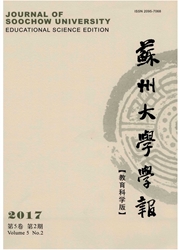

 中文摘要:
中文摘要:
前、后语节的语义关系是歇后语区别于其它语汇的重要本质.实验1和2通过启动范式探讨喻意 型和谐音型歇后语前、后语节互相作用的关系.结果发现,对喻意型歇后语和未呈现同音线索的谐音型歇后语, 后一语节对前一语节的启动量大于相反方向的启动量.在呈现同音线索的条件下,谐音型歇后语后一语节对前 一语节出现负启动现象.实验结果证实歇后语后一语节的语义单一、明了,语义确定作用明显.同时,实验3通 过眼动技术探讨在前、后语节语义一致或不一致条件下,歇后语前、后语节加工的时间差异,结果发现前一语 节加工需要更多的时间,但后一语节的语义是歇后语理解的关键.结合3个实验的结果可知,歇后语后一语节 是源,前一语节是流;歇后语创作和理解均基于前、后语节的语义一致性;同时,前、后语节的创作更多基于 语用原则.
 英文摘要:
英文摘要:
The relationship between the preceding part and the concluding part of xiehouyu ( bi-part Chinese allegorical sayings) is the differentiator that sets xiehouyu apart from other foims of expression. The presen tsdy tries to explore whether the preceding part facilitates understanding the concluding part or vice versa through experiment 1 and 2. Metaphorical and homophonic xihouyu are included in these two experiments with priming paradigm. The results show that in all the materials the concluding part primes the first part m ore effectively, except when homophones occurs in homophonic sayings,which results in a more effective prime of the preceding part to the concluding part. Experiment3 explores which one,the preceding or concluding part, is processed fasterwith eye movement when there is semantic agreement and disagreement in xiehouyu. The results show that compared with processing the concluding part, it takes more time to process the preceding part. The concluding pari, however,is the key to understanding the whole xiehouyu. The three experiments prove tha t the creation and comprehension of xiehouyu depends on the lexical identi饮 of the preceding and the concluding parts; and,more often than no、on pragmatic principles.
 同期刊论文项目
同期刊论文项目
 同项目期刊论文
同项目期刊论文
 期刊信息
期刊信息
